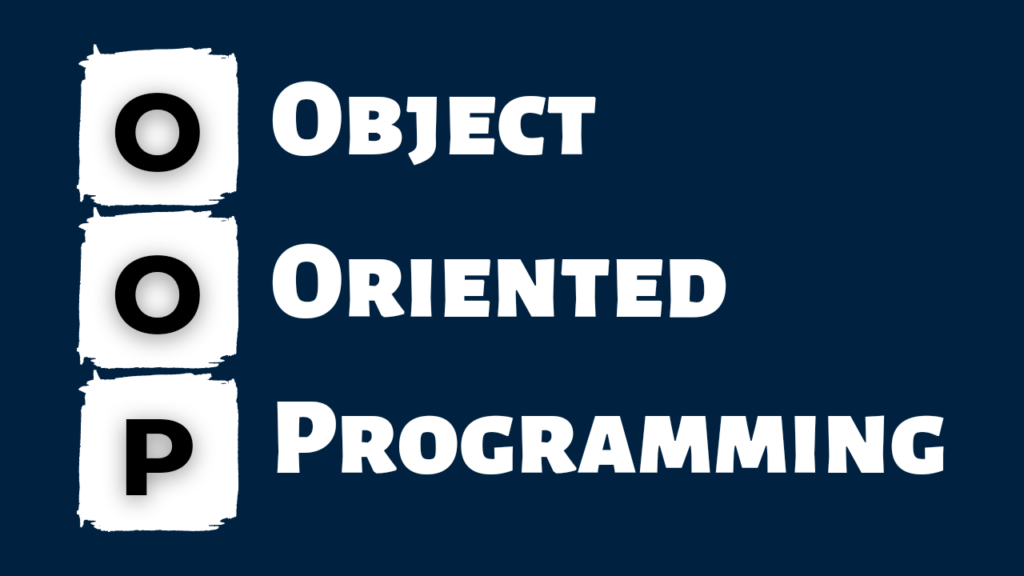Introduction
Object-oriented programming is today one of the most common programming paradigms that developers will encounter. Moreover, it has become essential in modern software development. Therefore, understanding OOP is crucial for anyone looking to build efficient and scalable applications. In fact, it is widely adopted across various industries. As a result, mastering OOP is crucial for modern software development. First, it provides a clear and ideal way to design and implement an application. Second, it supports the reuse of code, allowing improved scalability. The maintenance can thus be done more efficiently, which is why OOP fits perfectly into modern development. If you are a beginner or changing from procedural programming, understanding the basic concepts of OOP is essential for writing efficient and organized codes.
In this write-up, the plan is to delve into OOP by exploring its core principles, then explain its uses with examples in normal life, and finally, provide insights to help beginners get a little closer to understanding it.
What is Object-Oriented Programming?
OOP is a programming paradigm that centers on ‘objects,’ from which it derives its name. Moreover, these objects serve as the fundamental units of OOP, as they encapsulate data and behaviors. Consequently, this structure enables better organization and reusability in programming. Therefore, these objects form applications by interacting with each other. OOP, however, is meant for modeling real-world entities as easily and naturally as possible. This, in turn, puts a better organization of code into place and promotes reusability.
Key Concepts of OOP
1. Classes and Objects
- Class: The object-based concept namely protocol denotes the construction of an object only. The object is made up of attributes and methods that describe its actual functionalities. In addition, these components work together to define the object’s behavior. As a result, they provide a clear and structured way to model real-world entities.
- Object: An object, of a class, does not contain attributes and can invoke functions that are defined in the Classăng.
Example in Python:
class Car:
def __init__(self, brand, model, year):
self.brand = brand
self.model = model
self.year = year
def display_info(self):
print(f”Car: {self.brand} {self.model}, Year: {self.year}”)
# Creating an object
my_car = Car(“Toyota”, “Corolla”, 2022)
my_car.display_info()
2. Encapsulation
Encapsulation prevents access to certain attributes and methods of a class while guarding against unintended changes. It enhances data security, limiting outside interference. Developers therefore have secure data integrity. In addition, it offers ease in debugging as well as maintaining the software. Finally, this principle improves the overall robustness of the code.

Example:
class BankAccount:
def __init__(self, account_number, balance):
self.__account_number = account_number # Private attribute
self.__balance = balance # Private attribute
def deposit(self, amount):
self.__balance += amount
print(f”Deposited ${amount}. New balance: ${self.__balance}”)
def get_balance(self):
return self.__balance
# Creating an object
account = BankAccount(“123456”, 500)
account.deposit(200)
print(account.get_balance())
3. Inheritance
Inheritance enables a class to inherit properties and behaviors from another class, ensuring that one of the objectives approximately met is reusability of code and ascension.
Example:
class Vehicle:
def __init__(self, brand, model):
self.brand = brand
self.model = model
def show_info(self):
print(f”Vehicle: {self.brand} {self.model}”)
# Subclass (Child Class)
class Car(Vehicle):
def __init__(self, brand, model, doors):
super().__init__(brand, model)
self.doors = doors
def show_car_info(self):
print(f”Car: {self.brand} {self.model}, Doors: {self.doors}”)
# Creating an object
my_car = Car(“Honda”, “Civic”, 4)
my_car.show_car_info()
4. Polymorphism
Polymorphism allows for different methods to exhibit different forms based on the type of object invoking them. For example, this enables a method to behave differently depending on the object it is applied to. Therefore, polymorphism enhances flexibility and code reusability in programming. Such a strategy indeed helps to enrich the coding aspect.

Example:
class Animal:
def make_sound(self):
pass
class Dog(Animal):
def make_sound(self):
return “Bark”
class Cat(Animal):
def make_sound(self):
return “Meow”
# Function demonstrating polymorphism
for animal in [Dog(), Cat()]:
print(animal.make_sound())
Benefits of OOP
- Modularity: Developers couple codes among classes and objects so as to achieve a better system design by making the structure manageable and organized.
- Reusability: Developers make use of methods to create reference messages in a declarative manner; thus promoting code reuse in the various sections of the program.
- Scalability: A programmer can easily add to the program with very little modification, thus it becomes easier to adapt the software as requirements grow.
- Data Security: Encapsulation prepares security walls around important data to restrict access to it; hence, enhancing protection and security to sensitive data.
- Code Maintainability: OOP makes debugging and modification easier; hence efficient maintenance and updates of the code will occur.
Real-World Applications of OOP
- Software Development: Utilized for web development frameworks such as Django and Flask and for the desktop-side applications.
- Game Development: Developers implement neat Object-Oriented Programming (OOP) principles to manage interactions between characters and the world in game engines such as Unity and Unreal Engine.
- Embedded Systems: Structure intricate firmware solutions for hardware devices using OOP.
- Mobile Applications: Android and iOS apps implement object-oriented programming in Java, Swift, and Kotlin.
- Database Management: It is the Object-Relational Mapping (ORM) frameworks, where SQLAlahemy is included, that adhere to OOP principles.

Conclusion
You can make powerful concatenations by writing in a context-heavy multiplier. Object-oriented programming thus narrows down to some exceedingly simple principles through which programmers can develop sophisticated applications capable of scaling. OOP principles like encapsulation, inheritance, polymorphism, and other new ideas in the long run ultimately lead to modular, reusable, and maintainable code.
Moreover, these principles enhance the flexibility and scalability of software systems. As a result, these principles improve the overall structure and efficiency of software development. That is why mastering OOP is considered a step forward for anyone who would like to develop a better programming capability. One needs to go deep into OOP, write applications, and apply OOP in projects.
Additionally, this hands-on experience helps solidify understanding. Consequently, it leads to better proficiency in using OOP principles effectively. And practice keeps it all fresh in one’s mind: so up builds the base in OOP. The knowledge will then be more translated into effective and scalable software development.




A motivating discussion is worth comment. I think that you
should publish more on this issue, it may not be a taboo subject but typically people don’t speak about
such issues. To the next! Many thanks!!
This website was… how do you say it? Relevant!!
Finally I have found something which helped me. Many thanks!
As someone just starting out in software development, this guide was incredibly helpful. I always found Object-Oriented Programming (OOP) intimidating, but your simple explanation of classes, objects, inheritance, and encapsulation made things so much clearer. I especially liked how you included real-world analogies—it helped me connect the concepts to actual use cases. I’m using Python, and your examples translated really well. Thanks for making OOP finally “click” for me!
This article is exactly what beginners need. I’m currently studying computer science in New York, and while we’ve covered the theory behind OOP, the way you broke down concepts like polymorphism and abstraction with code snippets made everything more digestible. Also, I appreciate how you explained why OOP matters in modern software architecture—it gave me a better understanding of how to structure my own projects. Subscribed and looking forward to more guides like this!